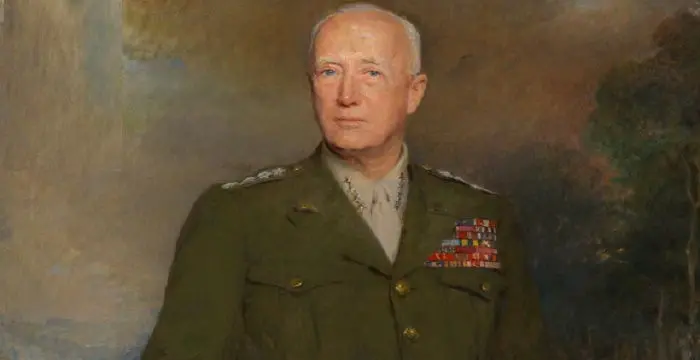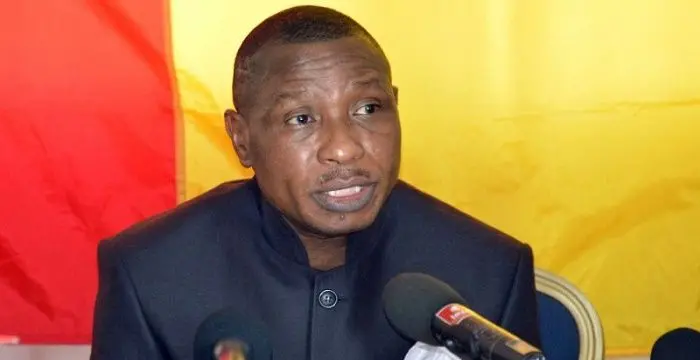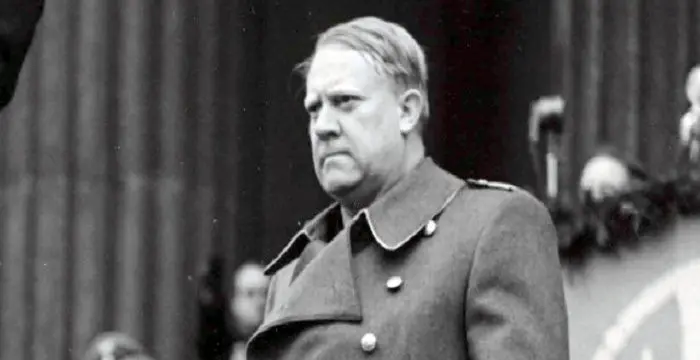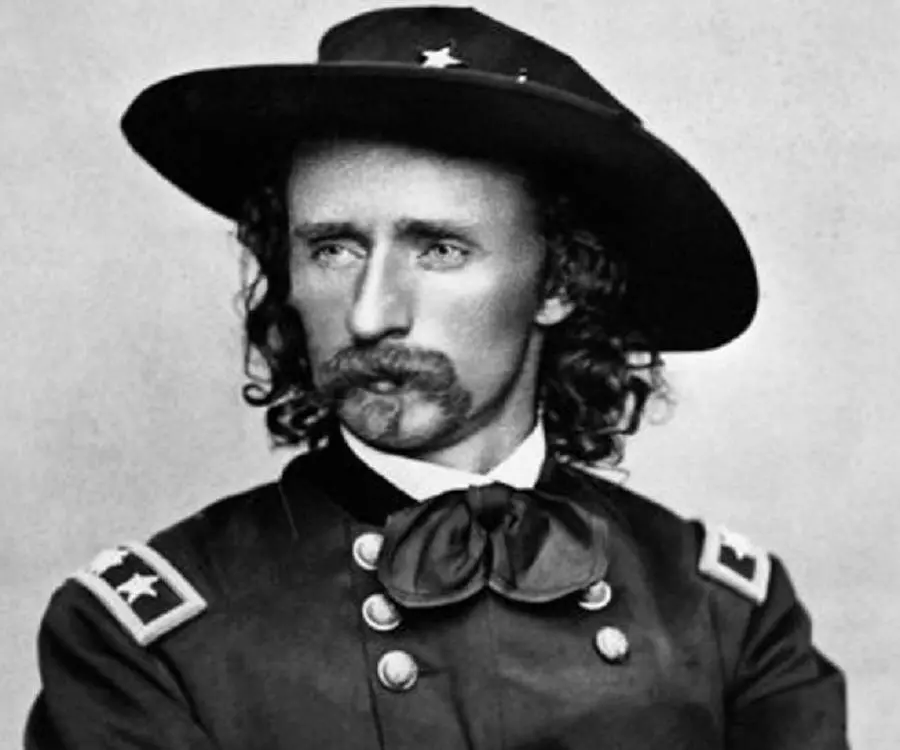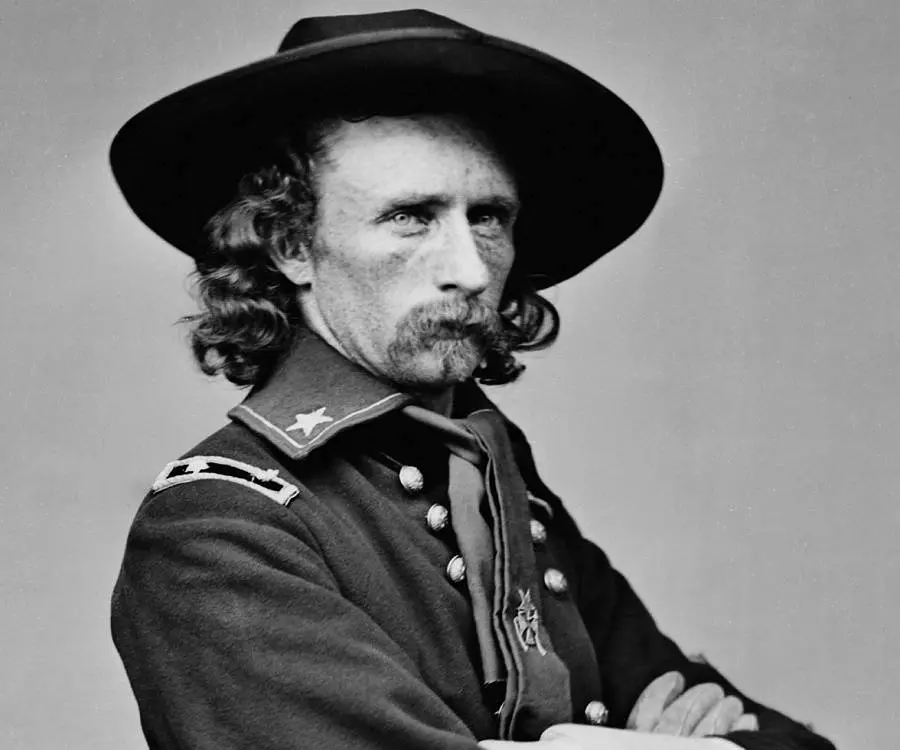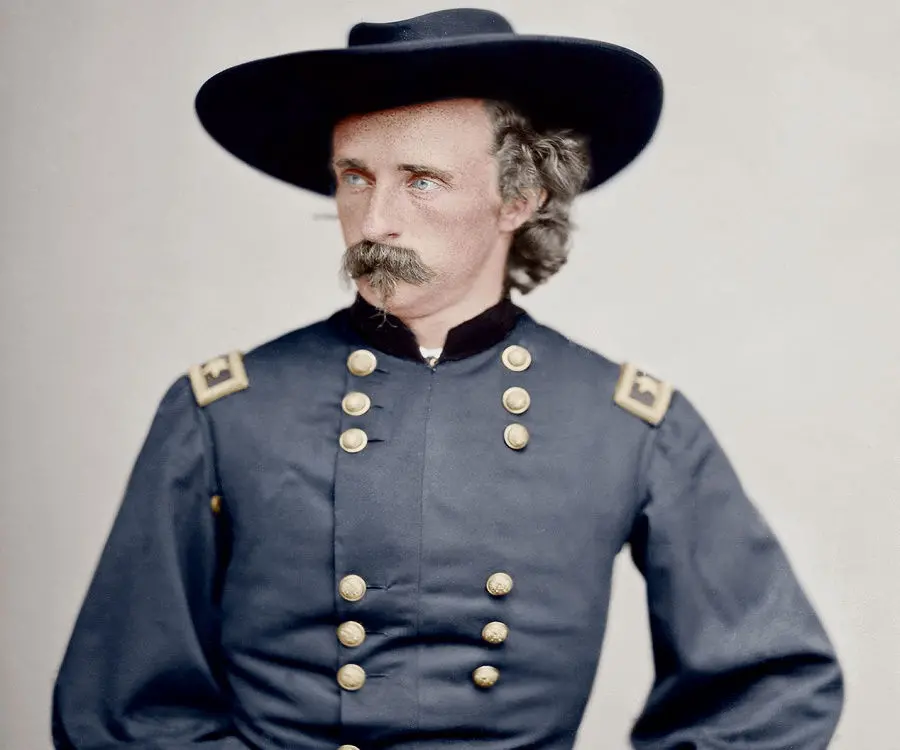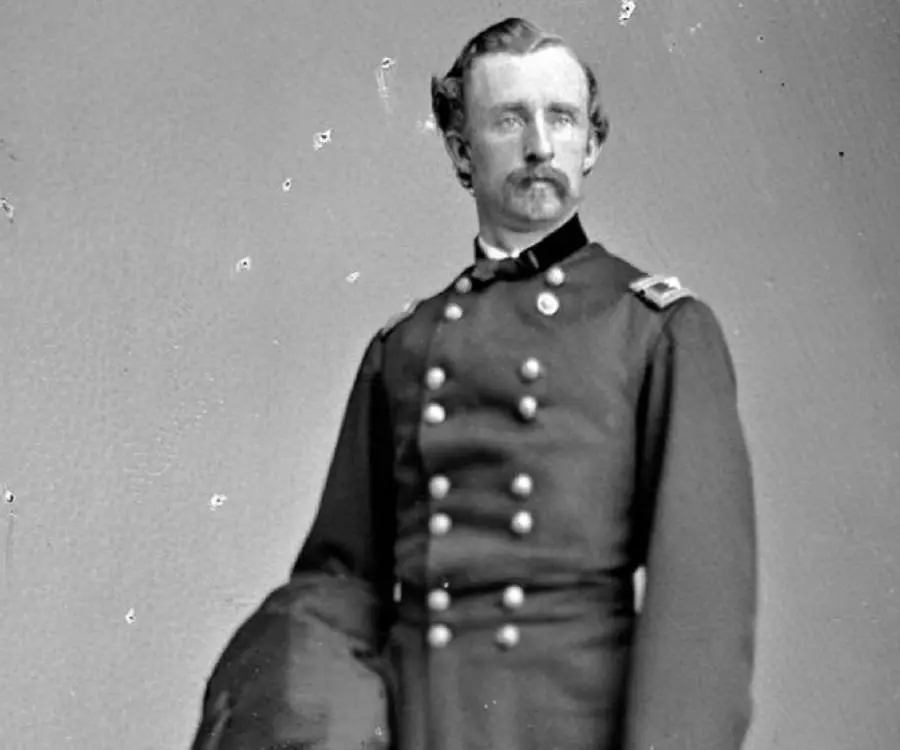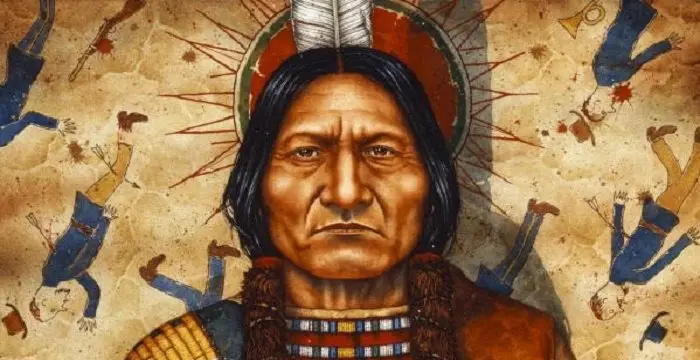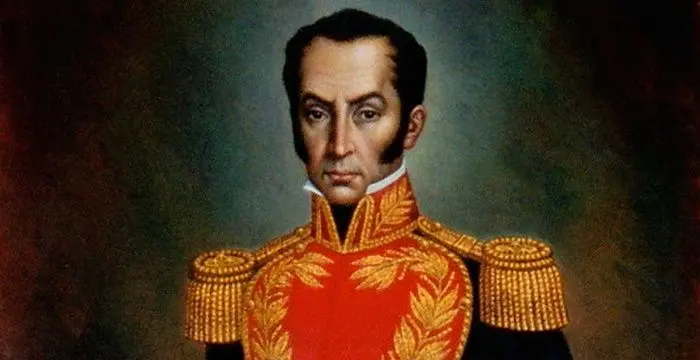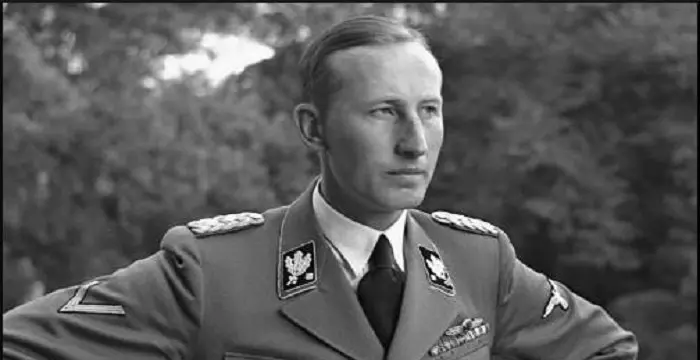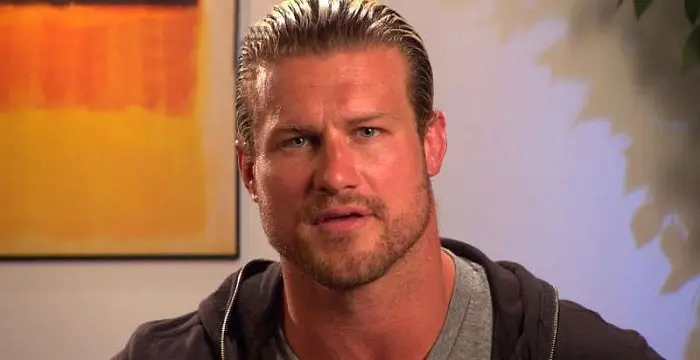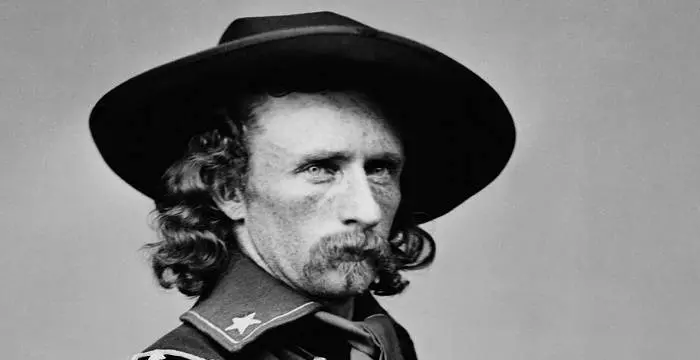
George Armstrong Custer - Military Officer, Family and Facts
George Armstrong Custer's Personal Details
George Armstrong Custer was a ‘US Army’ officer who fought during the American Civil War and the American Indian Wars.
| Information | Detail |
|---|---|
| Birthday | December 5, 1839 |
| Died on | June 25, 1876 |
| Nationality | American |
| Famous | Leaders, Military Leaders, Military Officer |
| City/State | Ohio |
| Spouses | Elizabeth Bacon Custer (m. 1864–1876) |
| Siblings | Boston Custer, David Kirkpatrick, James Custer, John Kirkpatrick, Lydia Ann Reed, Margaret Custer, Nevin Custer, Samuel Custer, Thomas Custer |
| Universities |
|
| Founder / Co-Founder |
|
| Birth Place | New Rumley, Ohio |
| Gender | Male |
| Father | Emanuel Henry Custer |
| Mother | Maria Ward Kirkpatrick |
| Sun Sign | Sagittarius |
| Born in | New Rumley, Ohio |
| Famous as | Military Officer |
| Died at Age | 36 |
// Famous Military Officer
George Patton
General George Patton was a famous US military commander who was best known for his bold and decisive actions during World War I and World War II.
Moussa Dadis Camara
Moussa Dadis Camara is a former President of Guinea and also a career military man. To know more about his childhood, career, profile and timeline read on.
Vidkun Quisling
Vidkun Quisling was a Norwegian army official and a politician, who supported Hitler during Nazi invasion of Norway. This biography profiles his childhood, personal life, family, career, etc.
George Armstrong Custer's photo
Who is George Armstrong Custer?
George Armstrong Custer was a ‘US Army’ officer who fought during the American Civil War and the American Indian Wars. He was born into a family of farmers in Ohio and was raised in Michigan and Ohio. After finishing school, he joined the ‘United States Military Academy.’ He developed a huge fan base and a strong reputation as a military commander during the Civil War. Since the First Battle of Bull Run, George worked under many different commanders and learned the tactics of war, which helped him when he had his own cavalry. He became famous for destroying his enemies during the battles of Gettysburg and Culpeper Court House. In 1864, he was made a major general. He was then in his mid-20s. Despite all the battles that he fought during his lifetime, he is best known for the Battle of the Little Bighorn, where he died fighting gallantly. He attacked the Native Americans in what was already known as a suicide mission and lost his life. The US government has since honored him by naming a number of counties and municipalities after him.
// Famous Leaders
Edi Rama
Edi Rama is the current Prime Minister of Albania. Check out this biography to know about his childhood, life, achievements, works & timeline.
Tecumseh
Tecumseh was a Native American leader of the Shawnee clan. This biography profiles his childhood, life and timeline.
Khalifa bin Zayed Al Nahyan
Sheikh Khalifa bin Zayed Al Nahyan is the current President of the United Arab Emirates (UAE). Check out this biography to know about his birthday, childhood, family life, achievements and fun facts about him.
Childhood & Early Life
George Armstrong Custer was born on December 5, 1839, in New Rumley, Ohio, into a middle-class family. His father, Emanuel Henry Custer, was a farmer and a blacksmith. His mother, Marie Ward Kirkpatrick, was a homemaker. George was the eldest child in the family and had four younger siblings. He also had three half-siblings from his father’s previous marriage.
George was raised as a strong democrat. All the other children in the family, too, were raised to be tough humans. Much of George’s remarkable courage was due to his father, who had been strict with him ever since he was a little kid.
One of George’s half-sisters was married to a wealthy man in Michigan. George spent most of his school years at his sister’s house in Michigan. He attended ‘McNeely Normal School.’ George did a number of odd jobs, such as carrying coal, to earn enough money to pay for his education.
As soon as he finished high school, George became a teacher. Following this, he thought of entering the ‘United States Military Academy.’ Being a teacher who taught at a grammar school, he lacked the qualification that was necessary to enter the military academy.
He met a congressman who made sure he got enrolled into the academy. George entered the military academy in 1857, but the duration of the course was shortened to four years once the ‘Civil War’ broke out in 1861. He was the last on the graduates’ list.
Many of his fellow students later claimed that George was the last person they thought could graduate from the academy. He was lazy, disinterested, and undisciplined. He also came close to getting expelled a number of times. However, as many of the students from the academy had already dropped out, the government needed trained men on the battlefields. Hence, George was allowed to graduate.
Military Career
In July 1861, George witnessed war for the first time during the famous Battle of Bull Run, where he was stationed as a second lieutenant. His job was to carry messages from one senior officer to another. He displayed immense courage and presence of mind, which was appreciated by Major General George B McClellan, a commander of the ‘Union Army.’
George was appointed to work closely with a number of senior officers and developed contacts with many commanders. This led to his promotion. He became a brigadier general of US volunteers at the tender age of 23. He was to lead the ‘Michigan Cavalry Brigade,’ which included four regiments from his home state of Michigan.
Over the next few years, he proved his worth as a highly efficient military commander and earned for himself the nickname “Boy General,” owing to his young age. He became known for leading his cavalries in the iconic battles of Gettysburg and Yellow Tavern. Media houses such as the ‘New York Tribune’ published stories praising his antics on the battleground and claimed that he would later be known as a “first class hero.”
By the time the ‘Civil War’ ended, he was given the highly prestigious rank of major general. His cavalries played a decisive role in the capture of ‘Confederate Army’ general Robert E Lee in 1865, which was one of the major events that marked the end of the Civil War.
Several honors were bestowed upon him. He was gifted the table on which the peace agreement was signed. A letter praising George was sent to his wife, by General Philip Sheridan. According to General Sheridan, George had played a decisive role in bringing the war to an end.
Soon after the war was over, George thought of leaving the army and decided to set up his own business. He also thought of venturing into politics. During this time, the western front was facing trouble due to Indians who were executing attacks on the American army.
The ‘7th Cavalry Regiment’ was raised to tackle the Native American forces in the west. George was made the lieutenant colonel and was to lead the troops in the war. He arrived in Kansas in late 1866. By the spring of 1867, he had already started executing attacks on the Indians. The Sioux and the Cheyenne clans were the biggest rivals of the American forces, and he led several attacks on these two tribes.
His cavalries faced a brutal massacre in the hands of his enemies. This had bad consequences, as several soldiers claimed that George had deserted his army in the face of defeat. He was also brought under the scanner for visiting his wife in the middle of the war. He also faced a court martial. However, he was back by the end of 1868, when Phil Sheridan himself advocated for him and claimed that the army needed him.
Over the next few years, George led many attacks on the Indians and fought gallantly. Several media publications published his stories of war. He was known to have narrowly dodged several lethal attacks in the battles. Thus, the term “Custer’s Luck” was coined.
However, his luck ran out in 1876, during the infamous Battle of the Little Bighorn. The US government had ordered an attack on the Cheyenne and the Lakota tribes in June. The plan was that three American cavalries would attack and crush the tribes at the same time, from three sides. However, George misread the message and attacked the tribes faster. In the absence proper backup, his cavalry faced a heavy loss.
On June 25, George ordered a vicious attack on a big Indian village with only 210 men, which was more or less a suicide mission. The leader of the Indian tribe was known as “Sitting Bull” and was a feared warrior. The American government had already wronged him by not accepting his peace treaty at Bighorn. George’s men were attacked, surrounded, and killed. George and two of his brothers were killed in the attack.
Personal Life
George was married to Elizabeth Bacon and stayed committed to her throughout his life. They were deeply committed to each other and wrote long passionate letters to each other whenever George was away fighting battles.
He was known to have a flair for dramatics. He was known to be very careful about his appearance and used perfume oil to maintain his blonde hair and his glorious moustache.
He was 36 years old at the time of his death. Following his death, his wife, Elizabeth, spent her life writing about his heroics and about their time together.
Legacy
Several counties in the six American states of Oklahoma, Colorado, Idaho, South Dakota, Nebraska, and Montana have been named after him. Several municipalities have also been named in his honor.
// Famous Military Leaders
Sitting Bull
Sitting Bull was a Teton Dakota Indian chief who led Sioux tribes in their struggle for survival on the North American Great Plains.
Simon Bolivar
Simón Bolívar was a Venezuelan military leader who was instrumental in independence of several Latin American countries from the Spanish rule. This biography profiles his childhood, life, achievements and timeline.
Reinhard Heydrich
Reinhard Heydrich was a high-ranking German Nazi official during the World War II. Check out this biography to know about his childhood, family life, achievements and other facts about his life.
George Armstrong Custer biography timelines
- // 5th Dec 1839George Armstrong Custer was born on December 5, 1839, in New Rumley, Ohio, into a middle-class family. His father, Emanuel Henry Custer, was a farmer and a blacksmith. His mother, Marie Ward Kirkpatrick, was a homemaker. George was the eldest child in the family and had four younger siblings. He also had three half-siblings from his father’s previous marriage.
- // 1857 To 1861He met a congressman who made sure he got enrolled into the academy. George entered the military academy in 1857, but the duration of the course was shortened to four years once the ‘Civil War’ broke out in 1861. He was the last on the graduates’ list.
- // Jul 1861In July 1861, George witnessed war for the first time during the famous Battle of Bull Run, where he was stationed as a second lieutenant. His job was to carry messages from one senior officer to another. He displayed immense courage and presence of mind, which was appreciated by Major General George B McClellan, a commander of the ‘Union Army.’
- // 1865By the time the ‘Civil War’ ended, he was given the highly prestigious rank of major general. His cavalries played a decisive role in the capture of ‘Confederate Army’ general Robert E Lee in 1865, which was one of the major events that marked the end of the Civil War.
- // 1866 To 1867The ‘7th Cavalry Regiment’ was raised to tackle the Native American forces in the west. George was made the lieutenant colonel and was to lead the troops in the war. He arrived in Kansas in late 1866. By the spring of 1867, he had already started executing attacks on the Indians. The Sioux and the Cheyenne clans were the biggest rivals of the American forces, and he led several attacks on these two tribes.
- // 1868His cavalries faced a brutal massacre in the hands of his enemies. This had bad consequences, as several soldiers claimed that George had deserted his army in the face of defeat. He was also brought under the scanner for visiting his wife in the middle of the war. He also faced a court martial. However, he was back by the end of 1868, when Phil Sheridan himself advocated for him and claimed that the army needed him.
- // 1876However, his luck ran out in 1876, during the infamous Battle of the Little Bighorn. The US government had ordered an attack on the Cheyenne and the Lakota tribes in June. The plan was that three American cavalries would attack and crush the tribes at the same time, from three sides. However, George misread the message and attacked the tribes faster. In the absence proper backup, his cavalry faced a heavy loss.
// Famous Ohio peoples
Allicattt
All about American Vine star and YouTuber Allicatt including her age, birthday, family life, boyfriends, net worth, and some fun facts.
Steven Spielberg
Steven Spielberg is a famous Hollywood director renowned for his movies such as ‘E.T.’, ‘Jurassic Park’ and ‘War of the Worlds’. To know more about his childhood, career, profile and timeline read on
Traci Lords
Traci Elizabeth Lords is a well-known American actress and singer. Let’s take a look at her childhood, family, achievements and some interesting facts.
Sarah Jessica Parker
Sarah Jessica Parker is an American actress and producer. Check out this biography to know about her childhood, family life, achievements and fun facts about her.
Kathleen Bassett
Kathleen Bassett is a famous philanthropist and former educator. Let’s take a look at her family, personal life, career etc.
Dolph Ziggler
Dolph Ziggler is an American wrestler and an occasional actor. Check out this biography to know about his childhood, family life, achievements and fun facts about his life.
George Armstrong Custer's FAQ
What is George Armstrong Custer birthday?
George Armstrong Custer was born at 1839-12-05
When was George Armstrong Custer died?
George Armstrong Custer was died at 1876-06-25
Where was George Armstrong Custer died?
George Armstrong Custer was died in Little Bighorn Battlefield National Monument, Montana
Which age was George Armstrong Custer died?
George Armstrong Custer was died at age 36
Where is George Armstrong Custer's birth place?
George Armstrong Custer was born in New Rumley, Ohio
What is George Armstrong Custer nationalities?
George Armstrong Custer's nationalities is American
Who is George Armstrong Custer spouses?
George Armstrong Custer's spouses is Elizabeth Bacon Custer (m. 1864–1876)
Who is George Armstrong Custer siblings?
George Armstrong Custer's siblings is Boston Custer, David Kirkpatrick, James Custer, John Kirkpatrick, Lydia Ann Reed, Margaret Custer, Nevin Custer, Samuel Custer, Thomas Custer
What was George Armstrong Custer universities?
George Armstrong Custer studied at United States Military Academy at West Point
Which company or organization was founded by George Armstrong Custer?
George Armstrong Custer was the founder/co-founder of 7th Cavalry Regiment
Who is George Armstrong Custer's father?
George Armstrong Custer's father is Emanuel Henry Custer
Who is George Armstrong Custer's mother?
George Armstrong Custer's mother is Maria Ward Kirkpatrick
What is George Armstrong Custer's sun sign?
George Armstrong Custer is Sagittarius
How famous is George Armstrong Custer?
George Armstrong Custer is famouse as Military Officer
